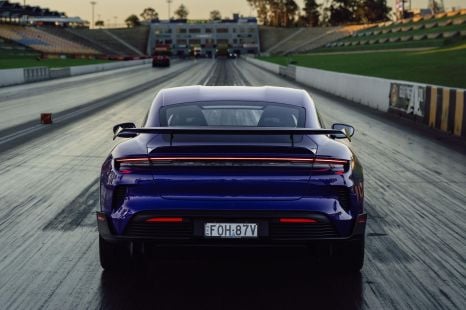

Toby Hagon
Banned! The car that’s too quick for Aussie drag strips
3 Hours Ago
Every time it looks like the BMW 7 Series or the Audi A8 is getting close, the Mercedes-Benz S-Class takes another leap forward. Just like today.
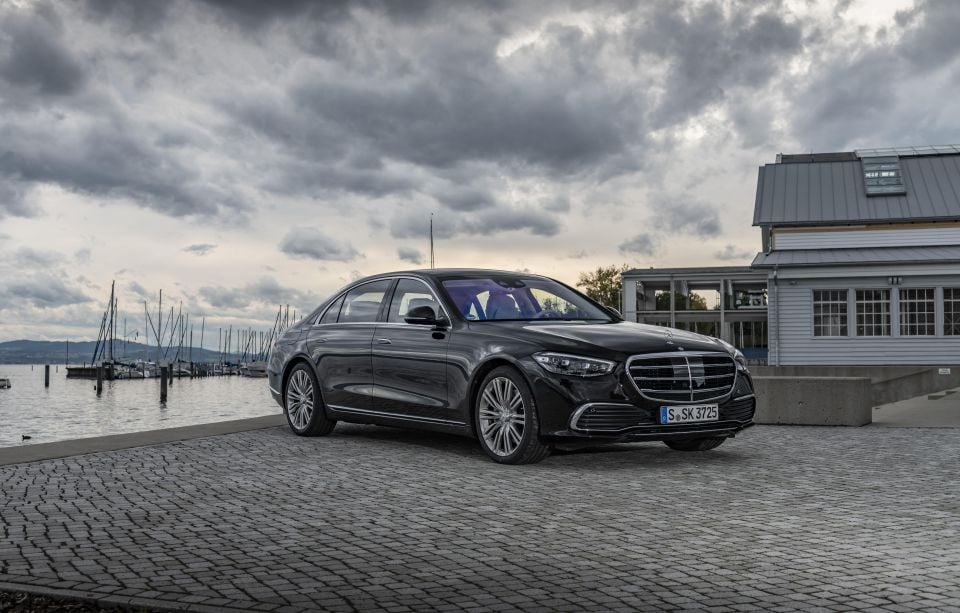


Contributor
New from
$206,589
excl. on-roads

Contributor
New from
$206,589
excl. on-roads


Contributor
New from
$206,589
excl. on-roads

Contributor
New from
$206,589
excl. on-roads
Quickly see how this car stacks up against its competition. Select any benchmark to see more details.
Where expert car reviews meet expert car buying – CarExpert gives you trusted advice, personalised service and real savings on your next new car.
The Mercedes-Benz S-Class has never been all things to all people, but to some, the flagship limousine has been the only car that mattered.
It is, people argue, the gold standard of luxury cars. It’s the car that has the reputation (battered as it may have been lately) of delivering technology breakthroughs before anybody else.
It seems like the 2021 Mercedes-Benz S-Class is back to its best, with so many technical leaps forward that one review page seems unable to do more than brush the surface of its wonders.
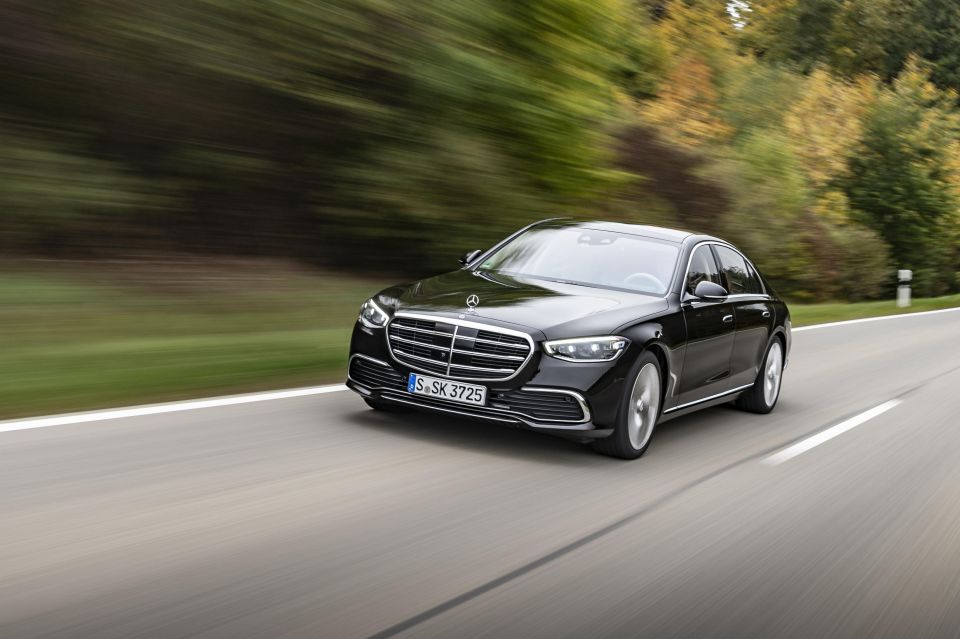
Did you know, for example, its sensors can detect side impacts before they happen, and raise the air suspension up 80mm almost instantly to take the hit precisely where it can spread the load best?
Or that it has 10 degrees of rear-wheel steering, cutting two metres off its turning circle diameter?
Or that it has 2.6 million (million!) pixels in its digital headlights? The last car had just 168!
Or that, in a suitably equipped parking garage, you can book a park on your smartphone app, drive through the barrier and then abandon the car to park itself while you hasten off to your flight or hot date?
It’s longer than before and wider, too, plus a touch higher. More pointedly, it reverts to the clean, uncluttered lines that imbued the earliest S-Classes with such timeless gravitas.
Its interior is an astonishing statement in both luxury and technology, including an augmented reality head-up display and those sumptuous soft cushion covers for every headrest in the car.
And its technology has moved on far enough that it can update more than 50 electrical systems over-the-air (OTA).
The entry models in Germany will cost €93,438 ($155,750) plus on-road costs. That’s for the S350d diesel-powered six-cylinder turbo; the only rear-wheel drive in the S-Class ranks.
There are, in Europe at least, S350d 4Matic (all-wheel drive) and S400d 4Matic models, but Australians prefer a less overpowering aroma in their luxury-car fuel. That’s a good thing, because none of the diesels use the 48-Volt mild-hybrid integrated starter generator to ease their low-speed emissions burdens and aid their acceleration.
That means we will kick things off with the S450 4Matic in Australia, likely before climbing up to the S500 4Matic.
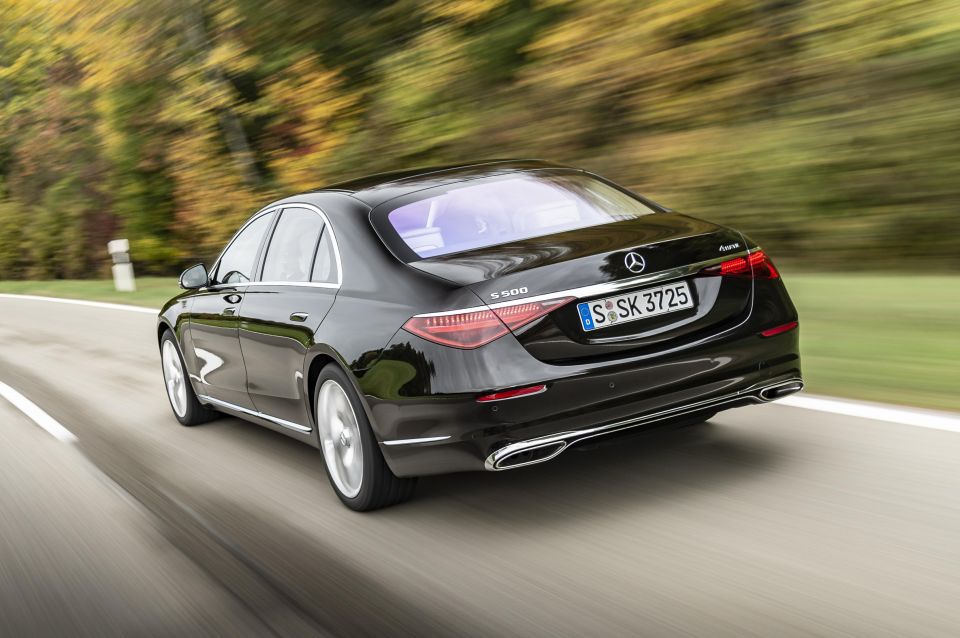
Those are the five early starters for the S-Class in Europe, though a mighty S580 using an AMG 4.0-litre biturbo V8, is coming and so is the S580e plug-in hybrid, complete with 100km of zero-emission EV running.
MB Australia has yet to confirm prices, but it has confirmed that we will be taking the S450 in-line six-cylinder, turbo petrol version in both short and long wheelbases.
Of the rest, the S580 V8 and the 580e plug-in hybrid are on the wish list – and MB Australia will be leveraging its ridiculous AMG sales to get them.
All the engines couple with nine-speed automatic transmissions, too.
The options list is long enough to make Homer wish he’d tacked a few more pages on The Iliad and ranges from the bodywork to the suspension to the safety features to the in-car luxury to the headlights to just about everything else you can imagine.
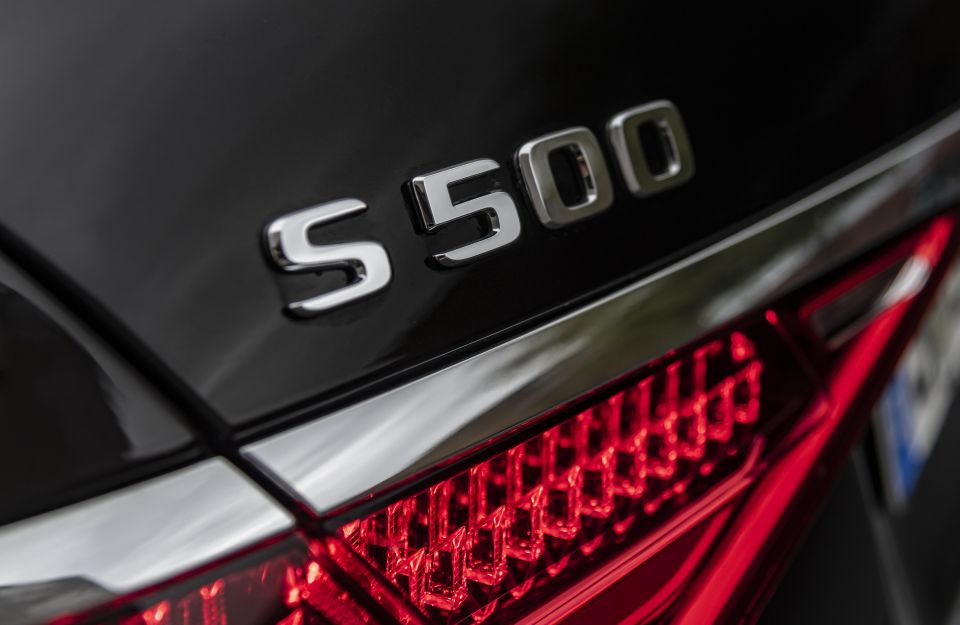
Buy your new car without the stress. It's fast, simple and completely free.

Great service from Travis and team, second time I have used this business would not hesitate to recommend them to anyone
Craig C.
Purchased a Ford Ranger in Sunshine Coast, QLD
CarExpert helped Craig save $7,224 on his Ford Ranger, now let us save you on your next new car.
Get your BEST priceWant it? It’s here.
Don’t want it? It’s here anyway.
Want some more? Tick the box and buy some more.
That’s the way the S-Class works, and it always has.
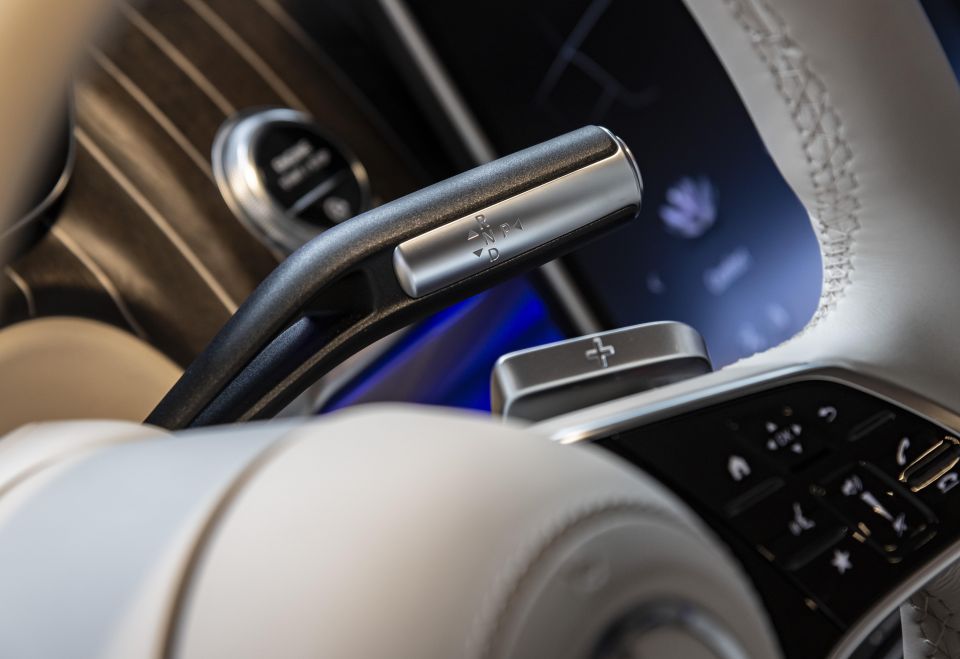
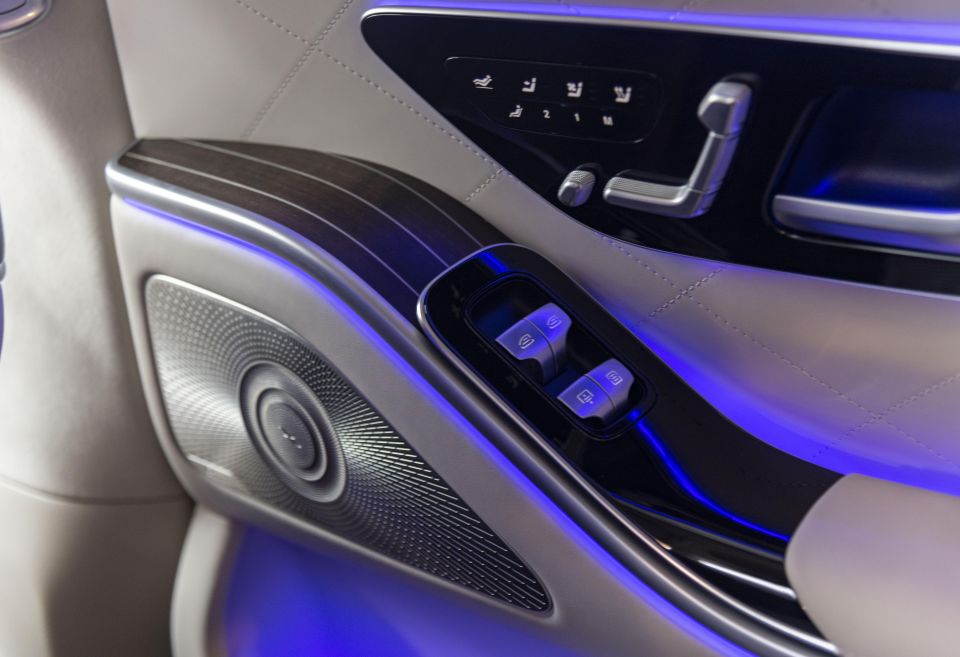


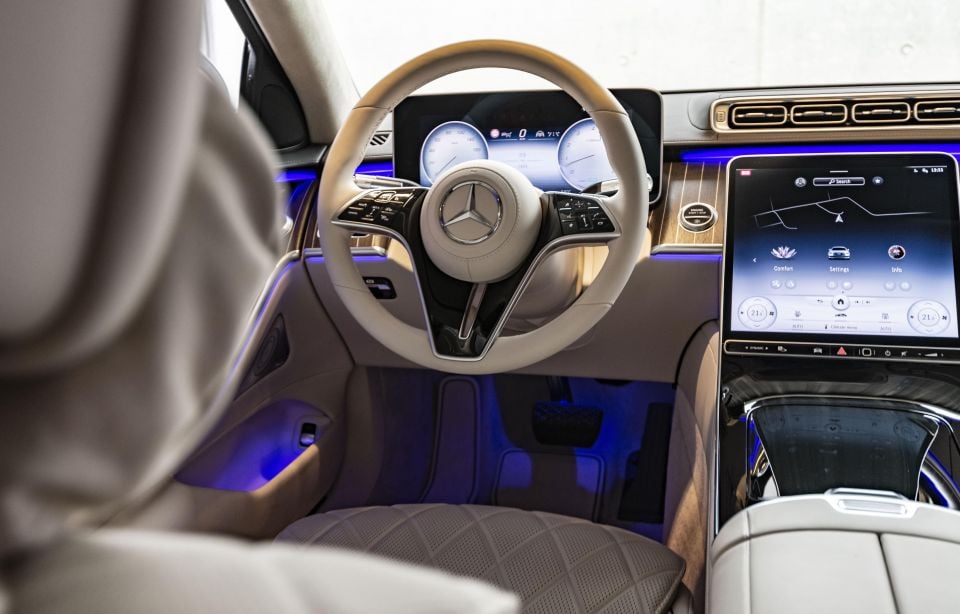
There are breakthroughs here for Mercedes-Benz, and one of the first you notice is the flush-fitting door handles that pop out via the key or the interior door handle. And you need only brush them, rather than pull them out, to open the door.
You don’t necessarily need the key, either, because the car can work with biometric authentication, face recognition, fingerprints, a voice or a PIN.
MORE: Get a full breakdown of the new S-Class
Although it hasn’t been tested by ANCAP or Euro NCAP, asking if the S-Class is safe is like asking if photons are quick.
We’re talking about a car with an almost infinite number of tricks to avoid being involved in a crash, then another almost infinite number of tricks to make even huge crashes survivable.
There are two kinds of safety: active (avoiding crashes) and passive (surviving them), so we’ll start with active.
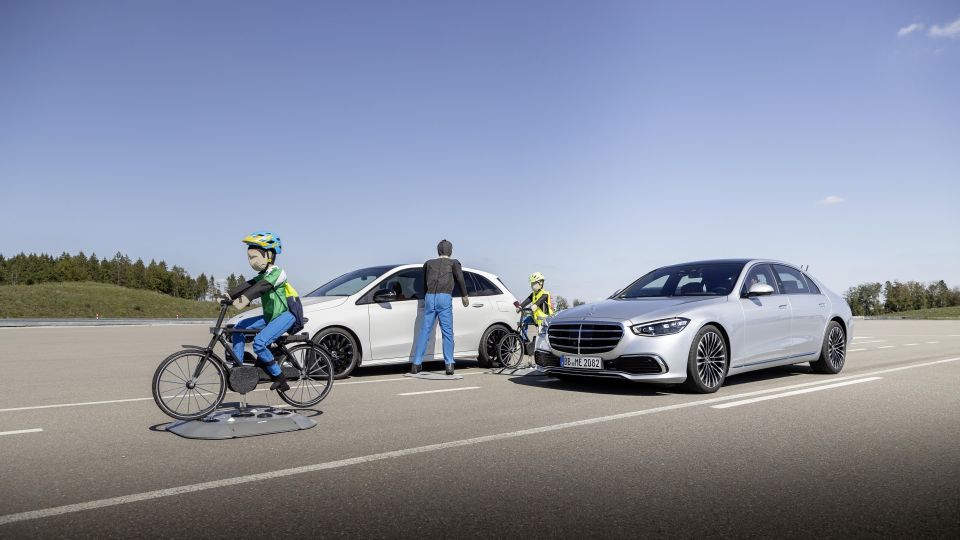
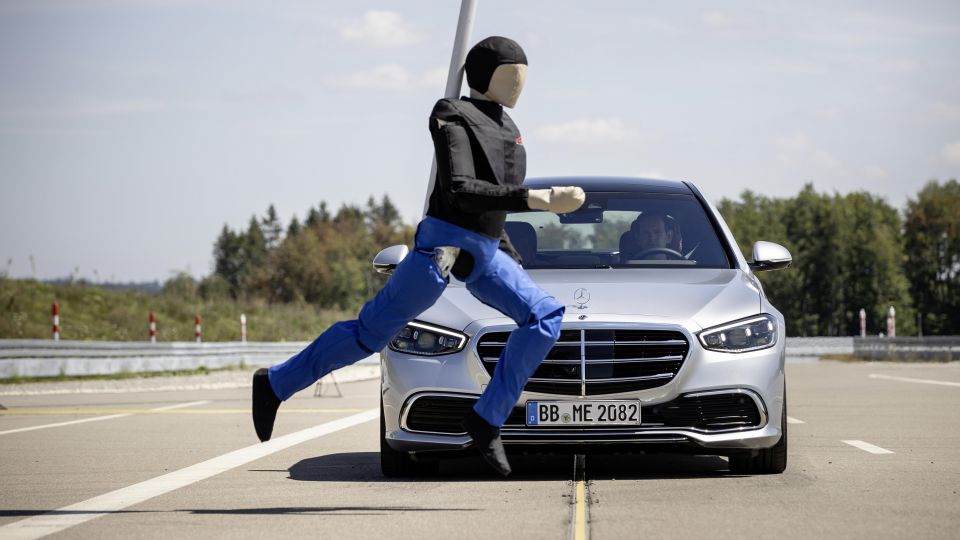
The S-Class has the capacity to run as full Level 3 assisted-driving car, which means it can be operated hands-free at up to 60km/h – because that’s the speed the European Commission is about to allow.
It doesn’t mean drivers will be able to sleep, but it does mean they’ll be able to do things like play YouTube videos, with the stereo driver-monitoring cameras keeping two eyes on you.
They’ve thought this through, too. There are two front radars with 130 degrees of “vision”, a long-range front radar, a pair of rear radars, a front-facing stereo camera, a 360-degree camera and 12 ultrasonic sensors.
Then there are LiDar sensors and there’s even another camera in the rear screen, just to identify any emergency vehicles approaching from behind you.

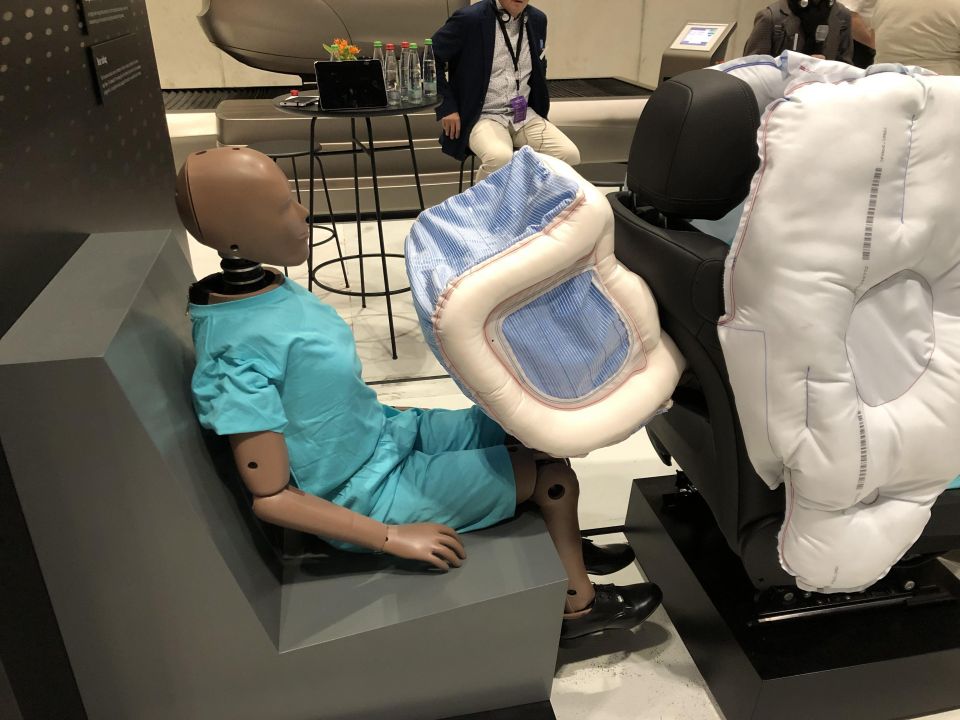
There is good and bad in this. Firstly, it’s all still waiting for the legislation to be enacted, so late 2021. Secondly, it’s only up to 60km/h. Thirdly, it will be an optional extra, thanks to the added sensors and steering pieces.
But the entire sensor suite is there to provide overlap so the car can make real-time data comparisons, so it never relies entirely on one type of information.
Neither does it soak up all the possible braking space when it stops itself to avoid a crash, because Benz recognizes that a sudden stop can put you at huge risk of a rear-end collision.
It can now run on its active cruise control in any condition, even in towns, thanks to a new steering response, and the system still works – including delivering lane changes – at up to 250km/h.
It goes further, with its updated steering chiming in to help people turn to avoid crashes. It even tries to nudge people in the right direction, back into the safe part of the road, after they’ve avoided the first hazard in a potential accident.
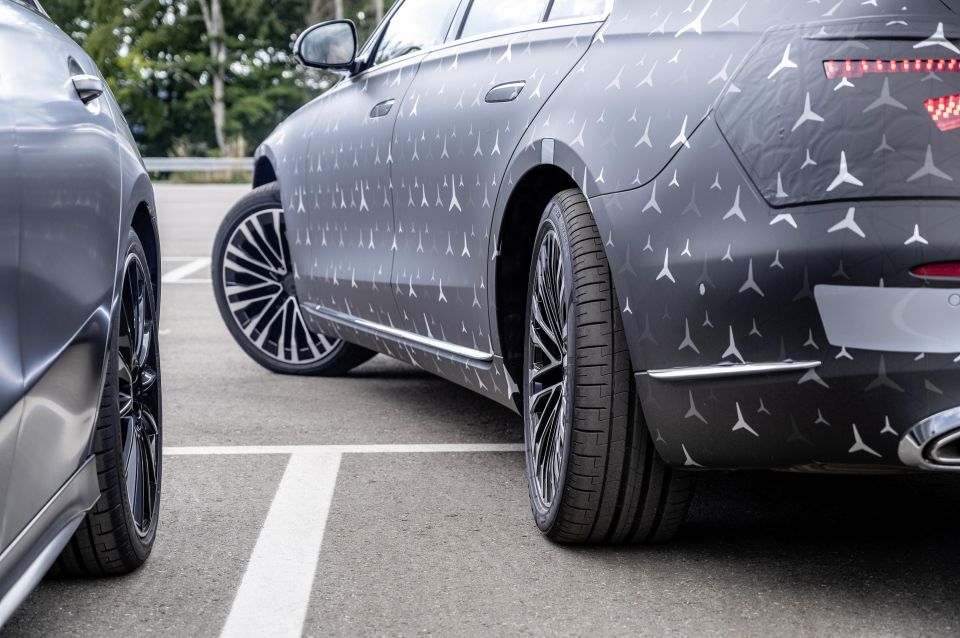
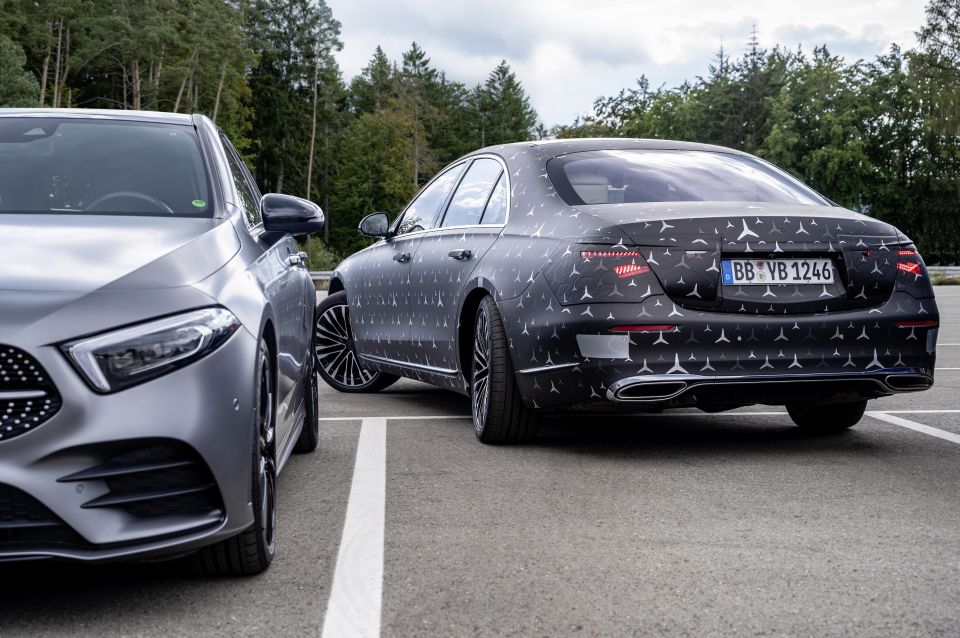
When things go more wrong than the S-Class’s impressive crash-avoidance features can manage, it must rely on more mundane hardware. Or does it?
In its long wheelbase form, the S-Class will be the first car to offer front airbags for the front passengers and the rear passengers.
It will raise itself up 80mm if it detects an inevitable side-impact, so that the collision will hit the strongest part of the car.
Even the seat side bolsters inflate to push each passenger just that little bit further away from a collision and there are even centre airbags to stop the people from banging their heads together.

There are large curtain airbags, too, along with optional rear side bags and the belt bag, which runs inside the seat belts.
There are even two separate crash safety structures in the rear – one that remains rigid to protect the fuel tank and the other that deforms to relax the deceleration.
That the S-Class drips with luxury won’t surprise anybody. That it drips with breakthrough interior technology might, though.
Try a three-dimensional display on the instrument cluster (which can be turned back to 2D, fortunately, for those who need reading glasses).
Try an augmented-reality head-up display, which adds more blue directional arrows as the car gets closer to a satellite navigation turn. Try the new, vertical touchscreen that is far more intuitive to use than ever before in a Benz and looks pretty nice, too.
Try those headrests…
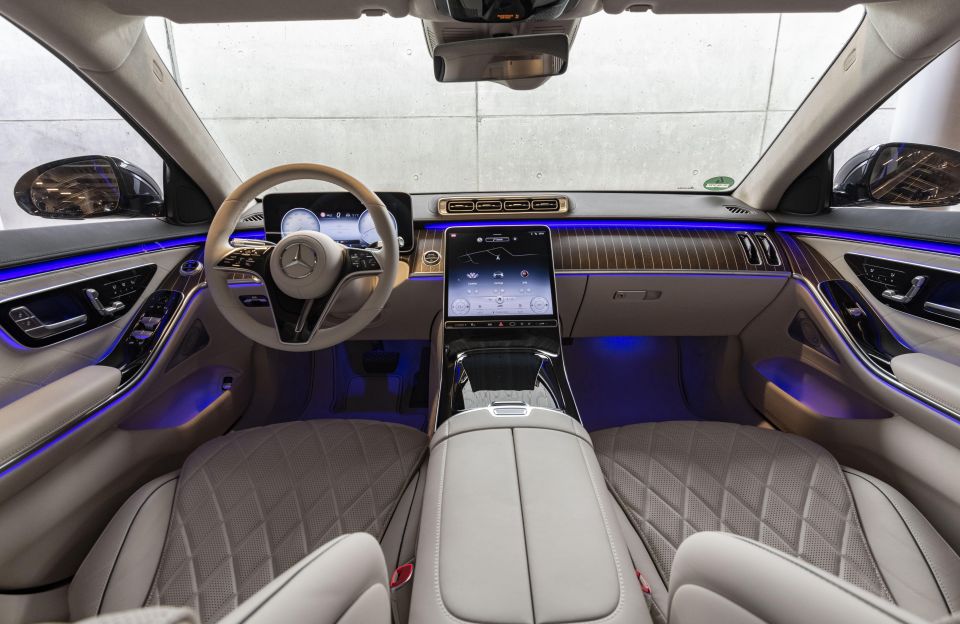
There is panelling at the dash’s mid-tier, then a row of four air vents in a completely new style for Benz. They also flank either side of the dash, though they’re switched to a vertical pose.
The car retains the twin-wing steering-wheel spokes, with so many functions they can barely be covered here.
The real deal is the rear bench, which can be ordered either with two or three seat belts. It’s the most comfortable place imaginable in a car.
There is enough legroom in the short wheelbase S-Class to stretch out easily, there are massage functions, cooling functions, wellness functions (that actually work).
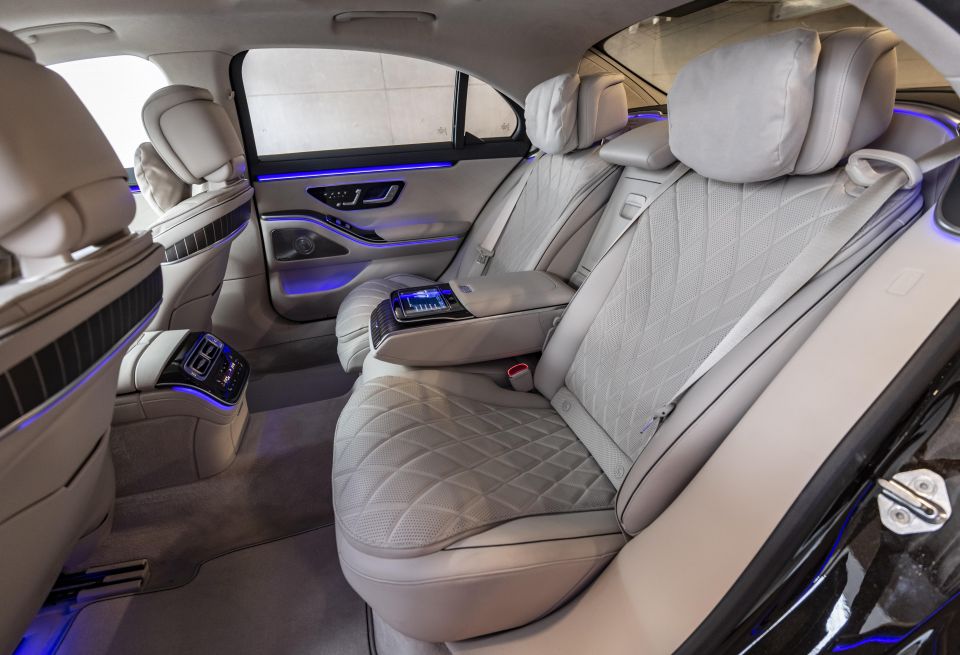
You can specify up to 19 motors in the seats alone, ranging from longitudinal, height, angle, backrest and head restraint adjustment to seat cushion depth and even (for the front passenger) heel support adjustment.
There are four vibration motors to massage each body in each seat, five fan motors, a motor for the lumbar support and another one for the adjustable side bolsters.
It’s just absurdly comfortable and complicated without ever feeling complex.
This depends entirely upon which S-Class you ask for. And write a cheque for.
Both the S450 and the S500 use the same 3.0-litre in-line, turbocharged six-cylinder engine, though one is not like the other one in output or price.
The base car has 270kW of power and 500Nm of torque, augmented by the mild-hybrid system’s 250Nm of electric boost from low engine revs.
The climb in price to the S500 sees a corresponding climb in engine strength, rising to 320kW and 520Nm, with the same electric urge down low.

That’s enough to slip it beneath the five-second barrier, to 4.9 seconds, which is 0.2 seconds quicker than the entry S-Class.
Just read that again slowly. The entry-level S-Class, with the cheapest S-Class motor, still hits 100km/h in 5.1 seconds – and acceleration has never been considered an S-Class thing.
The rise up to the S580 presents a comely alternative to the straight sixes, with mild-hybrid boost attached to the 4.0-litre, twin-turbo V8 and it’s magnificent.
The V8 itself hurls out 370Nm and 700Nm from 2000 to 4000rpm, and it’s attached to the second-generation Integrated Starter Generator, which delivers 15kW of power and 180Nm of torque.
It’s the darling of the bunch, to be honest, and the most seamless and calming to drive, despite the headline output figures.
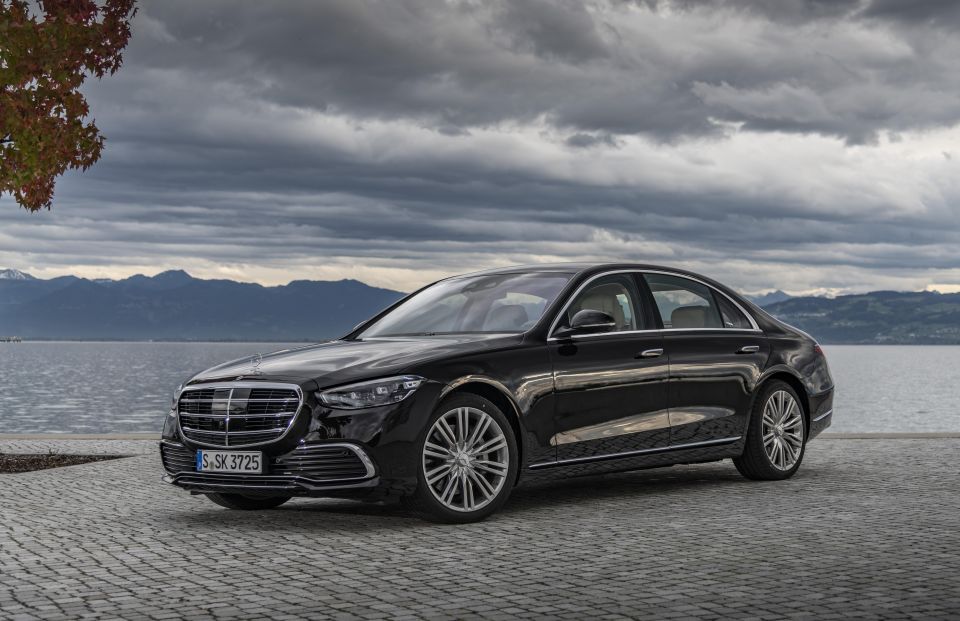
Beyond that, it’s hard to know how fast it will be or how much fuel it will use because it’s a ghost in the Mercedes-Benz machine.
It’s not on the books until mid-2021, so Mercedes is keeping its powder dry-ish, even though we drove it and thought it was easily the most charming of them.
The acid test is distilling all this technology into a cohesive package to drive, and Benz has almost done it. Almost.
The chassis and suspension are superb, with the active suspension system eradicating any bumps at all below 60km/h and evening them off nicely above that.
It can even tilt into corners like a motorbike, so it carries more speed than it ought to through the bends.
But it does its best work making the driver feel not just important, but ever so slightly better than anybody else on the road. It’s an S-Class thing.
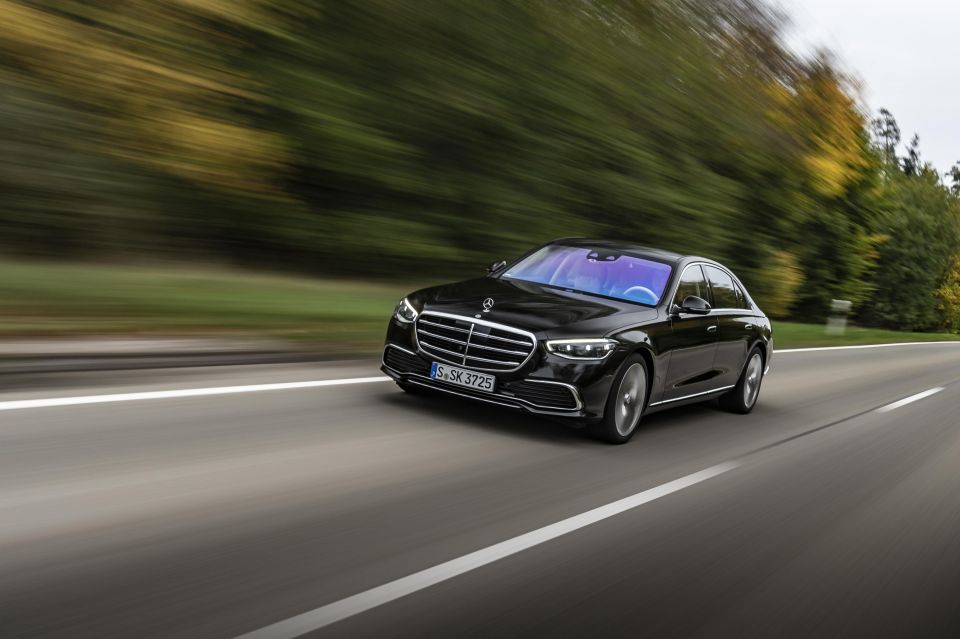
Where expert car reviews meet expert car buying – CarExpert gives you trusted advice, personalised service and real savings on your next new car.
It’s a throwback to a world when a luxury car buyer bought an S-Class or they were wrong, which added to the driver’s smugness, and adds to it again today.
The steering is the most obvious feature, even if it doesn’t seem like a standout amongst all those technical steps. Ten degrees of steering adjustment from the rear end is optional, but really should be mandatory.
It makes parking a doddle (with a two-metre reduction in the turning circle), but more importantly it adds to the car’s agility and its stability, and that’s a rare double to achieve.
The only noise inside the S-Class cabin is whatever noise Mercedes-Benz’s engineers want you to hear. It’s flawless in its ride comfort and its sound comfort.
The new user interface inside the multimedia display takes just moments of fiddling to become familiar with, and it’s a simple task to switch through most levels of the car.

There are issues, though. The pick of them is the S580 V8, which is as silken in its delivery as the interior is on the buttocks. Lordy, is it ever smooth. Never ruffled, never hurried, it’s just strong and it feels as though it would rip the S-Class to 100km/h in low fours, but we don’t have the times yet.
Things are a little different with the sixes, which have been inherited from the E-Class but feel considerably coarser here. Perhaps it’s the lack of other noise, but the exhaust tuning of the S450 feels unsophisticated and slightly lumpy, though the vibrations never upset the car.
They’re nothing like as smooth as six-cylinder engines from BMW, though the Bavarian motors are a litre smaller.
The other main issue is with the brake pedal’s multi-stepped feel. Early hybrid brake pedals could feel like stepping on a tennis ball before the actual normal braking happened below that, but the S-Class pedal feels like a balloon, then a tennis ball, and then a brake pedal.
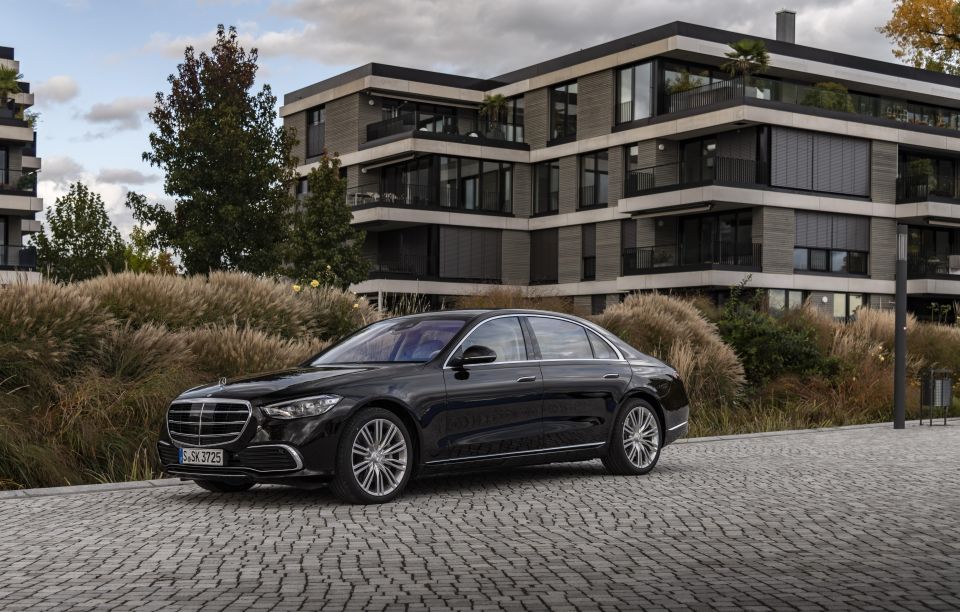
The other trace of oddness is that the car is so smooth, so integrated and organised that the multi-stepped side-bolster assistance feels like it’s a hangover from another age.
The Mercedes-Benz S-Class will be backed by a five-year, unlimited-kilometre warranty when it touches down in Australia.
Service pricing hasn’t been locked in.
Buy your new car without the stress. It's fast, simple and completely free.

Great service from Travis and team, second time I have used this business would not hesitate to recommend them to anyone
Craig C.
Purchased a Ford Ranger in Sunshine Coast, QLD
CarExpert helped Craig save $7,224 on his Ford Ranger, now let us save you on your next new car.
Get your BEST priceIt’s a brilliant car, the Mercedes-Benz S-Class, but it’s not perfect. It feels like tonnes of cash and entire gene pools of engineers have been thrown at it, but there are some curious oversights.
The noise, vibration and harshness from the six-cylinder petrol engines is the starkest of them, but the brake pedal’s oddly stepped, squishy feel is another.
Look past them and you’ll find simply the most accomplished limousine in the world today.
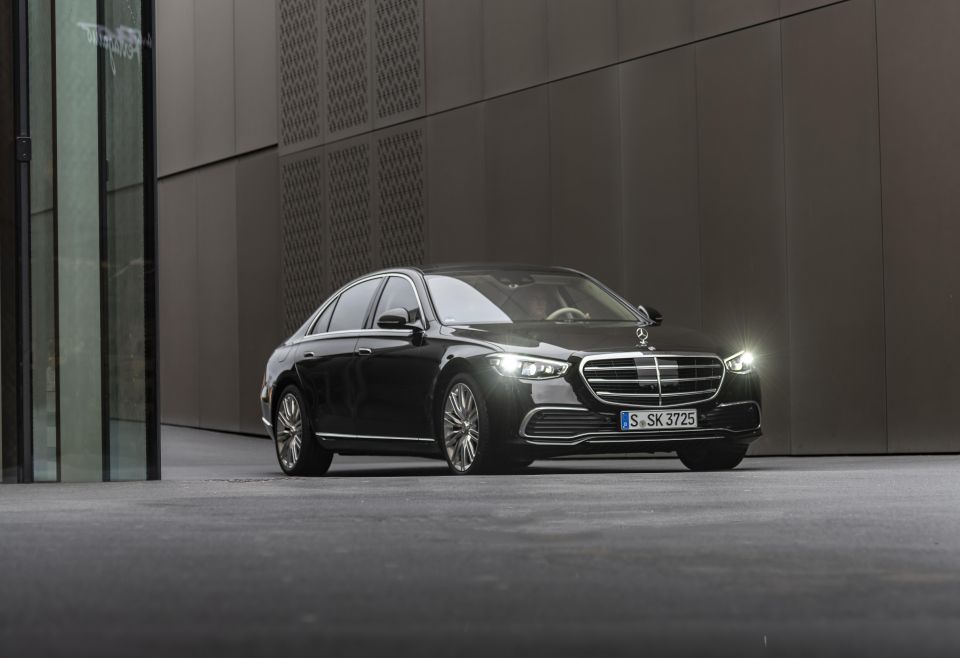
Where expert car reviews meet expert car buying – CarExpert gives you trusted advice, personalised service and real savings on your next new car.


Toby Hagon
3 Hours Ago
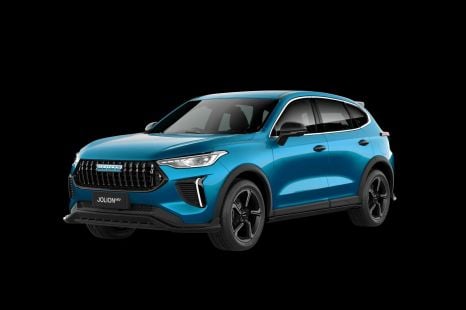

William Stopford
4 Hours Ago
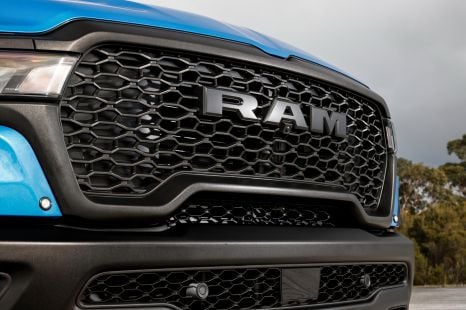

William Stopford
4 Hours Ago
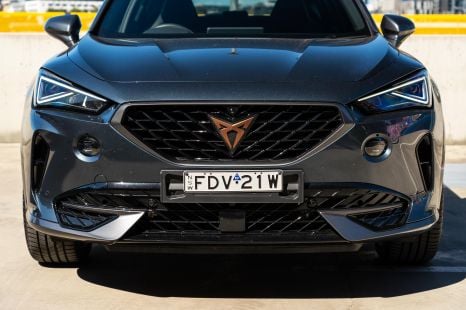

James Wong
6 Hours Ago
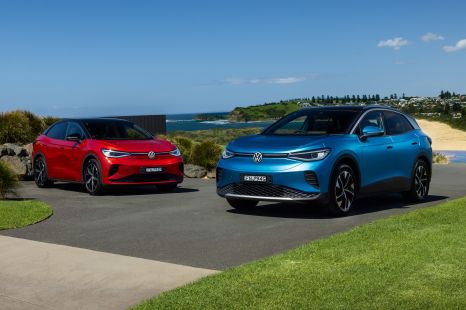

Damion Smy
8 Hours Ago
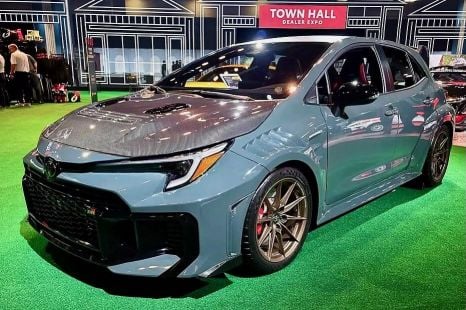

Ben Zachariah
8 Hours Ago